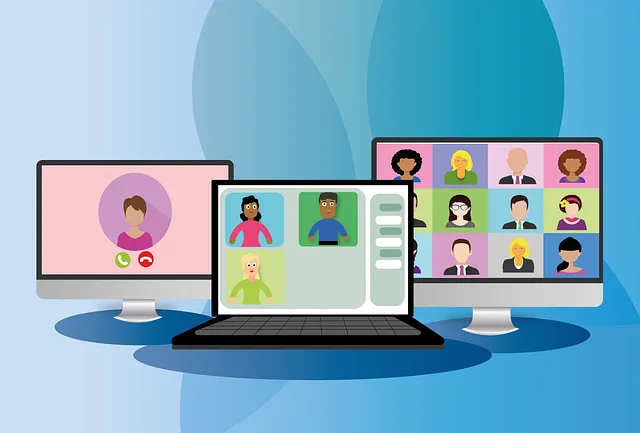Confidential computing is an essential innovation for non-profit organizations globally, providing a robust security layer to protect sensitive data both in use and at rest. By leveraging hardware and software protections, it shields donor information, beneficiary privacy, and data subject to stringent regulations or inherently sensitive by nature against unauthorized access and data breaches. In the digital age, where cyber threats are prevalent, confidential computing becomes crucial for secure cloud operations, enabling non-profits to focus on their missions without data exposure concerns. This technology not only defends against cyber threats but also aids in complying with international data protection laws, thereby building trust among stakeholders and donors. For organizations navigating digital transformation, integrating confidential computing is imperative. Additionally, anonymizing browsers are strategic tools to protect sensitive data, maintain operational confidentiality, and secure personal information, offering IP masking and encrypted web traffic to deter cyber threats. Non-profits must carefully select among available options, considering user experience, system compatibility, and privacy levels. The importance of staying abreast of advancements in privacy technology, like confidential computing for non-profit organizations worldwide, cannot be overstated, as it ensures the protection of digital assets and supports compliance with diverse international regulations. Case studies showcase the tangible benefits of these technologies, including enhanced activist safety and increased volunteer engagement through secure data collection and collaboration.
Navigating the digital landscape, non-profit organizations worldwide face unique challenges in safeguarding sensitive data. This article delves into the pivotal role of confidential computing and the strategic deployment of anonymizing browsers within this sector. We explore the essential practices for maintaining robust data privacy and security, backed by real-world case studies demonstrating their successful application. For IT professionals in the non-profit domain, understanding and implementing these solutions are not just a best practice—they’re imperative for trust and compliance in an increasingly complex online environment.
- Understanding Confidential Computing: Its Role and Importance for Non-Profit Organizations Globally
- Implementing Anonymizing Browsers: A Guide for IT Professionals in the Non-Profit Sector
- Best Practices for Maintaining Data Privacy and Security with Confidential Computing Solutions
- Case Studies: How Non-Profits Have Successfully Deployed Anonymizing Browsers to Protect User Data
Understanding Confidential Computing: Its Role and Importance for Non-Profit Organizations Globally

Confidential computing represents a transformative approach to data protection, leveraging hardware and software safeguards to ensure that sensitive information processed by non-profit organizations remains confidential both in use and at rest. This paradigm is pivotal for non-profits as it addresses the critical need for safeguarding donor information, protecting beneficiary privacy, and maintaining the integrity of data that is often sensitive by nature or subject to stringent regulations. By adopting confidential computing solutions, these organizations can fortify their systems against internal and external threats, including unauthorized access and data breaches, which are increasingly common in our interconnected world.
Globally, non-profit organizations face a myriad of challenges that are amplified by the digital transformation underway across all sectors. Confidential computing offers a robust framework for these entities to operate securely and efficiently in the cloud, allowing them to focus on their core missions without the constant concern of data exposure. Its role is not just to protect against cyber threats but also to comply with data protection laws that vary by jurisdiction. As non-profits increasingly rely on complex IT systems to manage their operations and donor interactions, confidential computing becomes an indispensable tool for safeguarding their digital assets and maintaining the trust of stakeholders worldwide.
Implementing Anonymizing Browsers: A Guide for IT Professionals in the Non-Profit Sector

In an era where online privacy and security are paramount, IT professionals in the non-profit sector must navigate the complex digital landscape with precision. Implementing anonymizing browsers is a critical step towards safeguarding sensitive data and ensuring the confidentiality of computing operations. These tools mask users’ IP addresses and encrypt web traffic, effectively shielding online activities from prying eyes. For non-profits worldwide, adopting such measures not only protects beneficiaries and donors but also preserves the integrity of sensitive organizational data. Anonymizing browsers serve as a robust layer of security within confidential computing for non-profit organizations. They are particularly useful when accessing or transmitting data that could be targeted by malicious actors, such as financial records, donor information, or strategic planning documents. IT professionals should evaluate the various anonymizing browser options available, considering factors like user experience, compatibility with existing systems, and the level of anonymity provided. By integrating these solutions, non-profits can fortify their digital operations against cyber threats while upholding the trust placed in them by stakeholders.
Furthermore, the integration of anonymizing browsers must be seamless and supportive of all organizational activities. IT teams should conduct thorough assessments to determine the best solutions for their specific needs, ensuring that the implementation process causes minimal disruption. The deployment should be accompanied by comprehensive training for staff members to maximize the benefits of these tools. For non-profits operating across different jurisdictions with varying privacy regulations, anonymizing browsers are particularly valuable in maintaining compliance and adhering to global data protection standards. As confidential computing for non-profit organizations becomes increasingly integral to operational security, IT professionals must stay abreast of the latest developments in privacy technology to protect the digital assets of their respective organizations effectively.
Best Practices for Maintaining Data Privacy and Security with Confidential Computing Solutions

When implementing confidential computing solutions within IT environments, particularly for non-profit organizations worldwide, it is paramount to establish robust data privacy and security protocols. Confidential computing addresses the need to protect data both in use and at rest, ensuring that sensitive information remains confidential and accessible only to authorized parties. One of the best practices is to leverage hardware-based trusted execution environments (TEEs) that provide a secure area within the CPU where code and data can be isolated and encrypted. This isolation prevents unauthorized access and tampering, even if the underlying infrastructure is compromised.
In addition to utilizing TEEs, organizations should adopt a zero-trust security model, which assumes that no part of an organization’s IT infrastructure can be considered completely trustworthy, and therefore requires strict identification verification and authorization at every stage of data processing. Regularly updating software and patches is also crucial to mitigate the risks associated with known vulnerabilities. Non-profits should also implement comprehensive key management practices to control who has access to cryptographic keys that unlock sensitive data. Regular audits and compliance checks with relevant data protection regulations, such as GDPR or HIPAA, are essential to ensure ongoing adherence to privacy standards. By integrating these best practices into their confidential computing strategies, non-profit organizations can effectively safeguard the confidentiality and integrity of their data on a global scale.
Case Studies: How Non-Profits Have Successfully Deployed Anonymizing Browsers to Protect User Data

Non-profit organizations worldwide are increasingly aware of the importance of safeguarding user data in the digital age. To address this need, several non-profits have successfully deployed anonymizing browsers as part of their confidential computing strategies. For instance, a leading international human rights organization implemented an anonymizing browser to protect its activists’ identities and communications while operating in regions with oppressive regimes. This deployment not only shielded the users from surveillance but also allowed for secure collaboration across borders, facilitating the organization’s mission to advocate for civil liberties without compromising the safety of its stakeholders.
Another case study involves a global environmental non-profit that utilized an anonymizing browser to gather data from volunteers worldwide. The anonymizing layer ensured that the sensitive environmental data collected through citizen science could not be traced back to individual contributors, thus safeguarding their privacy. This initiative resulted in a significant increase in volunteer participation, as the participants felt secure in their contributions. The use of such browsers has become a cornerstone for these non-profits, enabling them to operate more effectively and ethically in their quest to serve their respective causes while maintaining the utmost confidentiality for their users.
In conclusion, the adoption of confidential computing and anonymizing browsers represents a pivotal step for non-profit organizations worldwide. The discussions within this article underscore the critical role these technologies play in safeguarding user data, enhancing privacy, and upholding the integrity of sensitive information. By following the best practices outlined, IT professionals in the non-profit sector can confidently implement anonymizing browsers, ensuring that their digital endeavors align with the highest standards of data protection. The case studies presented demonstrate the tangible benefits these solutions offer, exemplifying how non-profits have effectively shielded user privacy on a global scale. As these organizations continue to navigate complex digital landscapes, embracing confidential computing is not just a strategic move but an ethical imperative to protect the very individuals they serve.
